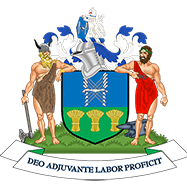The shilling and copper tokens issued by the Overseers of the Poor were made by Younge and Deakin, Union street. They also made tokens for other towns such as Bradford and Doncaster, and were the largest coiners of tokens in the north of England. No gold or silver Sheffield tokens were issued after 1812 and those that had been issued previously were withdrawn, as that year passed on June 29th, was the "Act to Prevent the Issuing and Circulating of Pieces of Gold and Silver, or Other Metal, Usually called Tokens, except such as are issued by the Banks of England and Ireland respectively". On 27th June 1817 a further Act was passed to prohibit copper tokens and that they should be withdrawn before 1818. However there was a special privilege granted for Sheffield, allowing its Overseers of the Poor to extend the redemption of their copper penny tokens until 25th March 1823.
John Younge and John Deakin were in partnership from 1811 to 1817. The partnership was probably dissolved in 1818 - John Younge left Sheffield and went to Peru, attracted by their silver mines, and worked as a physician near Lima. He returned to Sheffield, possibly with his native wife, in the early 1850's and lived in Hanover street until 1859. The other partner, John Deakin was by 1819 well established on his own account at Union street as a gilt plated and metal button manufacturer.



